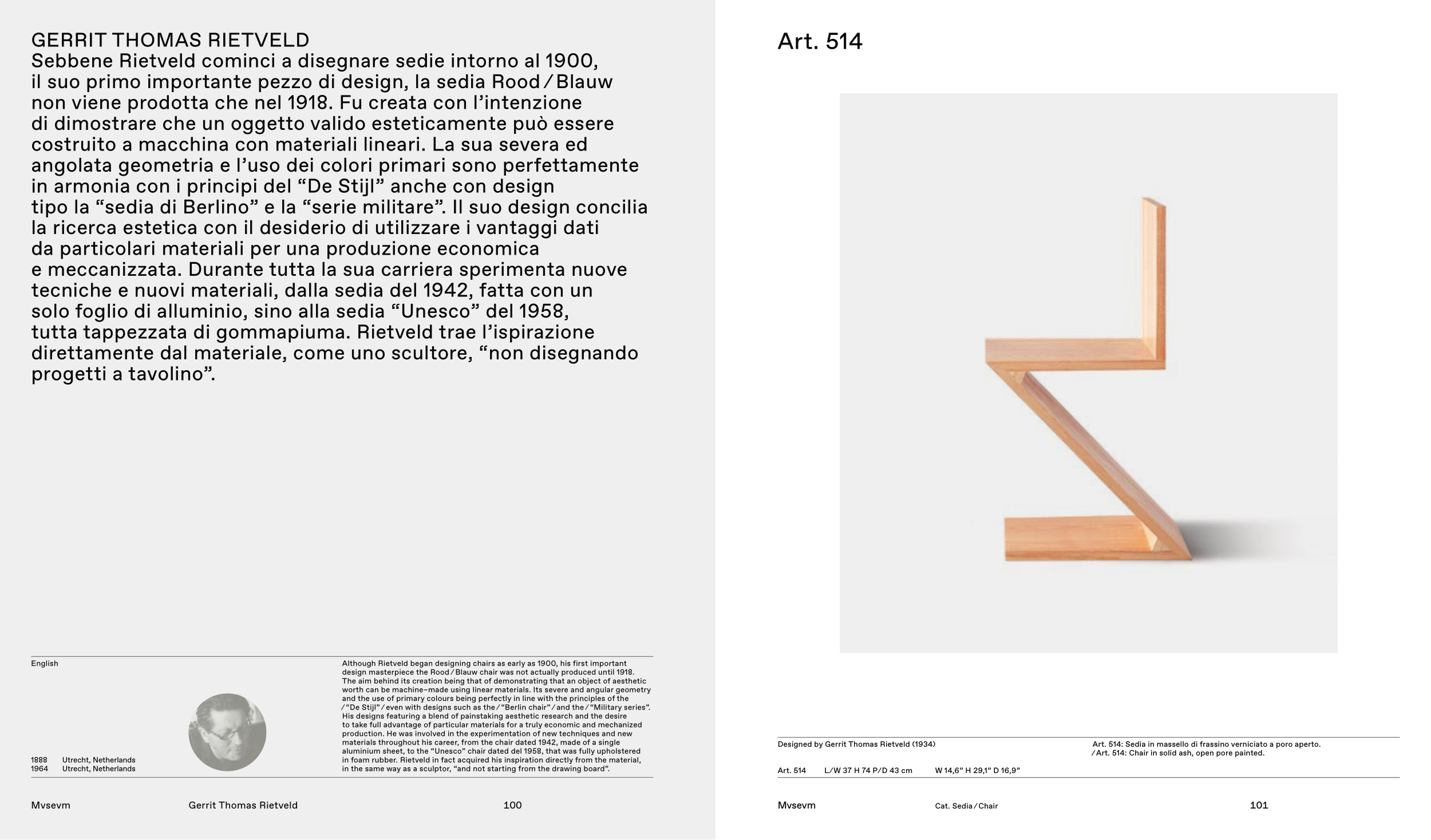100
101
Art. 514
Mvsevm
Cat. Sedia ⁄ Chair
Designed by Gerrit Thomas Rietveld (1934)
Art. 514
L ⁄ W 37 H 74 P ⁄ D 43 cm
W 14,6” H 29,1” D 16,9”
Art. 514: Sedia in massello di frassino verniciato a poro aperto.
⁄ Art. 514: Chair in solid ash, open pore painted.
GERRIT THOMAS RIETVELD
Sebbene Rietveld cominci a disegnare sedie intorno al 1900,
il suo primo importante pezzo di design, la sedia Rood ⁄ Blauw
non viene prodotta che nel 1918. Fu creata con l’intenzione
di dimostrare che un oggetto valido esteticamente può essere
costruito a macchina con materiali lineari. La sua severa ed
angolata geometria e l’uso dei colori primari sono perfettamente
in armonia con i principi del “De Stijl” anche con design
tipo la “sedia di Berlino” e la “serie militare”. Il suo design concilia
la ricerca estetica con il desiderio di utilizzare i vantaggi dati
da particolari materiali per una produzione economica
e meccanizzata. Durante tutta la sua carriera sperimenta nuove
tecniche e nuovi materiali, dalla sedia del 1942, fatta con un
solo foglio di alluminio, sino alla sedia “Unesco” del 1958,
tutta tappezzata di gommapiuma. Rietveld trae l’ispirazione
direttamente dal materiale, come uno scultore, “non disegnando
progetti a tavolino”.
Mvsevm
Gerrit Thomas Rietveld
Although Rietveld began designing chairs as early as 1900, his first important
design masterpiece the Rood ⁄ Blauw chair was not actually produced until 1918.
The aim behind its creation being that of demonstrating that an object of aesthetic
worth can be machine–made using linear materials. Its severe and angular geometry
and the use of primary colours being perfectly in line with the principles of the
⁄ “De Stijl” ⁄ even with designs such as the ⁄ “Berlin chair” ⁄ and the ⁄ “Military series”.
His designs featuring a blend of painstaking aesthetic research and the desire
to take full advantage of particular materials for a truly economic and mechanized
production. He was involved in the experimentation of new techniques and new
materials throughout his career, from the chair dated 1942, made of a single
aluminium sheet, to the “Unesco” chair dated del 1958, that was fully upholstered
in foam rubber. Rietveld in fact acquired his inspiration directly from the material,
in the same way as a sculptor, “and not starting from the drawing board”.
1888
Utrecht, Netherlands
1964
Utrecht, Netherlands
English


